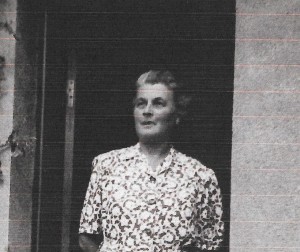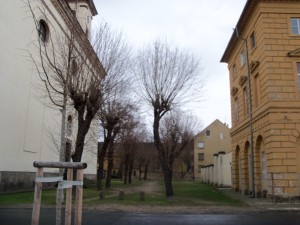Mrs. Diamant explained that this highly compassionate woman named Bertha Wolf was in charge of caring for the girls in House L410. Bertha did all she could to keep some degree of normalcy for the girls in the home, and her lessons in particular helped to structure their days. Judy remembers how Bertha spent many hours teaching them subjects such as German and Hebrew, and Jewish studies, and her presence was comforting and reassuring.
Bertha and Judy both survived the war in Terezin. Judy’s aunt Lily was murdered in Auschwitz in the fall of 1944. Though her hair was filled with lice and a quarantine was set soon after the camp was liberated, Judy along with her grandmother’s friend Milena managed to leave the camp before the quarantine. Milena accompanied Judy to a convent where she received a harsh treatment that burned and blistered her forehead and scalp, though it was effective in treating her head lice. After leaving the convent, Judy and Milena returned to Ostrava, where they were reunited with Judy’s stepfather. Judy did not remain in her hometown for long, as she was sent to boarding school in England, and as a young woman she took a job in Kenya. She met her husband at that company, a man whose family had fled Russia for Egypt some years before. Her daughter Sarah was born in South Africa and her daughter Naomi was born in England. The family lived in Kenya, South Africa, England and Italy and it wasn’t until both her daughters earned their PhDs and relocated to the United States did Judy move to New York. Judy has no nostalgia for her hometown of Ostrava; once she left she had no desire to return there. And though she has had a very fulfilling and rich adult life, Judy told me that survivor’s guilt is very real, and that it affects her to this day. Why was I chosen to survive? Why was my beautiful Aunt Lily chosen to die? These haunting questions still cross her mind at times, even after all these years.
At the same time, she retains a great affection for her special teacher Bertha Wolf. The two women remained in contact for many years until Bertha died, and Judy generously provided a picture of Bertha for me to copy and post on the blog. Here is a picture of Bertha Wolf, whose kindness and dedication to her girls provided some comfort and stability, even in Terezin.

